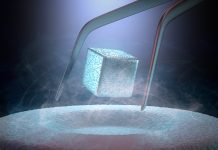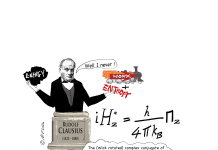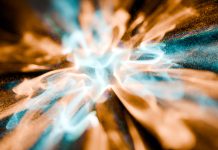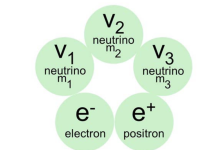Open Access Government produces compelling and informative news, publications, eBooks, and academic research articles for the public and private sector looking at health, diseases & conditions, workplace, research & innovation, digital transformation, government policy, environment, agriculture, energy, transport and more.
Home 2026
Archives
Understanding our place in the Milky Way: Insights into the local bubble
PD Dr Philipp Girichidis, Prof Dr Ralf S Klessen and Dr Stefan Reissl at Heidelberg University’s Centre for Astronomy provide insights into our place in the Milky Way and the Local Bubble.
Vaporization impacts surface tension
In this article, Prof Dr-Ing. Jörg Volpp from University West, Trollhättan in Sweden, explores how surface tension in pure metals behaves at high temperatures, particularly in the boiling range.
Quantum mechanics: Are we seeing reality as it is?
Dr Peter Verheyen from the Sola Society and Academy at Vienna University examines whether quantum mechanics and information serve as the fundamental descriptions of reality.
A new era of Lunar exploration: Canada is heading to the Moon
With Canadian astronaut Jeremy Hansen leading the way, Canada is heading to the Moon with humans and robots, as explained by Dr. Gordon Osinski from Western University.
Positron and electron catalysis of neutrino hadronization: How our universe was made: Part III
Constantinos G. Vayenas1, Dionysios Tsousis1,2 and Eftychia Martino1 examine positron and electron catalysis of neutrino hadronization, as they continue to explore how our Universe was made.
Future innovative radionuclides for cancer treatment at INFN
The Italian Institute for Nuclear Physics conducts cutting-edge research in the field of nuclear, particle, and astroparticle physics, as well as in developing technologies for research and their applications to benefit society.
Tiny dust particles in space are the seeds of life
Dr Stefan Reissl and Prof Dr Ralf S. Klessen introduce tiny dust particles in space, the seeds of life, in this intriguing field of astronomy research.
Bridging big science and industry quality control for laser manufacturing processes
Discover how researchers are making the PETRA III Swedish Materials Science beamline’s X-rays accessible for tracking the evolution of material properties during laser processing.
Predictive modelling of galactic star and planet formation
This article details advancements in our understanding of star and planet formation within galaxies, emphasising the transition from steady-state models to recognising the dynamic nature of the interstellar medium (ISM) in these processes.
4D dynamic earth: Advancing our understanding of the planet’s interior
B.C. (Bart) Root, an Assistant Professor at Delft University of Technology, discusses the 4D Dynamic Earth: Phase 1 project, which is enhancing our understanding of the planet’s interior.
Positron and electron catalysis of neutrino hadronization: How our universe was made. Part II
Constantinos G. Vayenas, Dionysios Tsousis and Eftychia Martino discuss advancements in understanding particle physics through the development of the Rotating Lepton Model (RLM).
How did the first stars form in space?
Ralf Klessen, professor of theoretical astrophysics at Heidelberg University, investigates the physical processes that governed the formation of the first generation of stars in the early Universe.
The role of neutrinos, quantum mechanics and special relativity in baryogenesis
Constantinos G. Vayenas from the University of Patras and the Academy of Athens, explores the roles of neutrinos, quantum mechanics, and special relativity in baryogenesis.
Model thinking for everyday life
Many people rely on quick internet searches for knowledge acquisition. In his book MODEL THINKING For Every Day Life, Richard C. Larson discusses how we can rethink our approach to problem-solving, leading to greater learning in the process.
Role of extracellular electron transfer in the nitrogen cycle
Extracellular electron transfer impacts the nitrogen cycle by enhancing microbial processes and connecting to other biogeochemical cycles. Understanding EET mechanisms provides insights into ecosystem functioning and potential advancements; Arpita Bose and Zhecheng (Robert) Zhang explain.
Positron and electron catalysis of neutrino hadronization: How our universe was made
Constantinos G. Vayenas1, Dionysios Tsousis1,2 and Eftychia Martino1, together, discuss how our Universe was made, focusing on positron and electron catalysis of neutrino hadronization.
The journey of high-temperature superconductors: From discovery to today
John H. Miller, Jr., Professor of Physics at the University of Houston, discusses progress in high-temperature superconductors and its applications.
Purposive physics
“The Universe doesn’t care about us. It can’t since it has no purpose!” This is what we are told. But is it true? How would we know either way?
Why gravitational waves cannot exist!
J-F Pommaret from CERMICS, Ecole des Ponts ParisTech, France, investigates the idea that gravitational waves cannot exist.
How positron and electron reactions shape the universe we live in
Constantinos G. Vayenas from the University of Patras, Academy of Athens explores how positron and electron catalysis of neutrino hadronization has created the mass of our universe.

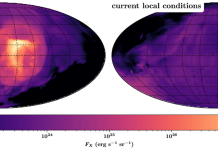

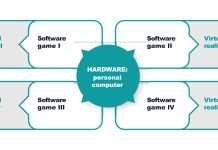


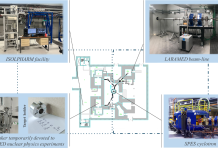
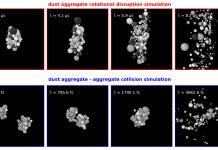

![Predictive modelling of galactic star and planet formation Figure 1 - The figure illustrates the diversity and multi-scale nature of the structures in the Galaxy. The first two lines are real astronomical images, which go from the galactic disk itself and down to the planet-forming disks. The last two lines are generated from numerical simulations and aim to understand and interpret the observations. [adapted from Facchini et al. 2025, Göller et al. 2025, Hennebelle et al. 2022, Lebreuilly et al. 2024, Molinari et al. 2016, 2025, Reissl et al. 2016]](https://www.openaccessgovernment.org/wp-content/uploads/2025/08/figure-218x150.png)
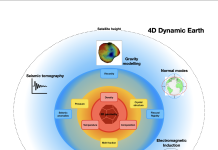
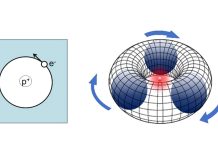
![How did the first stars form in space? Figure 1: Sketch of the evolution of the Universe over the last 13.77 billion years. It started with the Big Bang, followed by an extremely short period of rapid exponential expansion. The furthest we can see is the cosmic microwave background, when radiation decoupled from matter, approximately 380,000 years after the Big Bang. This is followed by the ‘dark ages,’ during which this radiation redshifted from the visible regime into infrared and sub-mm wavelengths. The occurrence of the first stars, about 400 million years after the Big Bang, ended this phase, spearheading the formation of galaxies as we see them today. [Credit: NASA/WMAP Science Team, public domain]](https://www.openaccessgovernment.org/wp-content/uploads/2025/05/Fig-1_1200-218x150.jpg)




